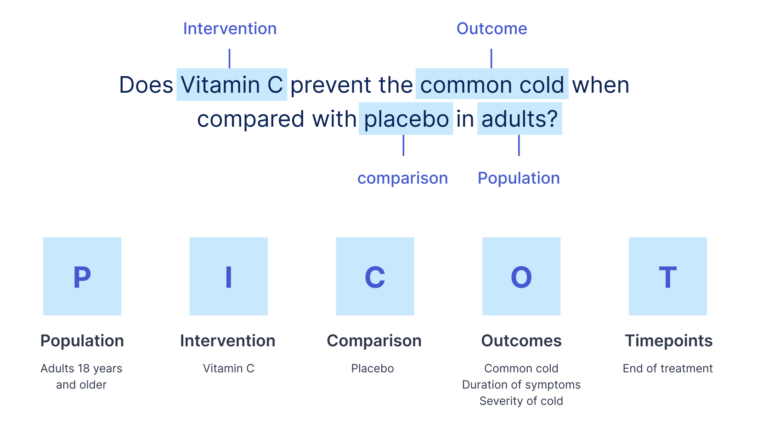Follow a Framework
Welcome to the latest blog in our series on Data Extraction! At the core of a successful systematic review is the adoption of a structured approach, and a data extraction framework is instrumental in achieving this. Frameworks such as PICO(T), are systematic, organised and not only enhance reliability and transparency but also contribute to the efficiency of the review process, supporting the validity and credibility of the findings.
PICO(T)
The development of the data extraction form is guided by the review framework.
A critical part of the protocol for a review is the PICO(T). “P” for population, “I” for intervention, “C” for comparison, “O” for outcome and “(T)” for timepoints. The PICO(T) components are often prespecified in the review protocol.
- Population: The specific population or group that you want to study. This should include characteristics such as age, gender, medical condition/disease, or any other relevant factors
- Intervention: The treatment, exposure, or intervention you are investigating.
- Comparison: The comparison group or alternative intervention you are investigating. This can be a placebo, another treatment, standard care, or the absence of the intervention.
- Outcomes: The outcomes you are interested in measuring or evaluating. These can be clinical outcomes, patient-reported outcomes, adverse events, or any relevant endpoints. Consider including outcomes that matter to the end users of the review.
- Timepoints: Some reviews include timepoints as part of the PICO(T) framework. You might be interested in collecting data only at specific timepoints.
- Other: Includes other essential eligibility criteria for your review such as study design.

PICO(T) and your data extraction template template
Using PICO(T) to guide data extraction ensures that the research question is clearly defined, and the data you collect are relevant and structured to answer that question. This approach helps maintain the rigor and consistency of your research.
You can use PICO(T) to:
- Create a data extraction template: Design a structured template to record the information for each included study in your review. Your template should include fields for the PICO(T) elements and any additional information you plan to extract for example characteristics of the population.
- Define extraction criteria: Clearly define the criteria for extracting data. For example, specify which data you will extract and any specific details you need to collect for each PICO(T) element.
Summary
Adhering to a structured approach is essential for the success of systematic reviews, with data extraction frameworks like PICO(T) playing a pivotal role. A framework will provide a systematic and organised guide, enhancing the reliability, transparency, and efficiency of your review process. In essence, a framework is not merely a procedural requirement but a foundational tool that elevates the precision and coherence of systematic reviews.
Our next blog covers ‘Planning Ahead’ and references our planning checklist which you can get by downloading ‘A practical guide: Data Extraction for Intervention Systematic Reviews’ below.
Don’t forget to share this blog with friends or colleagues and on social media


